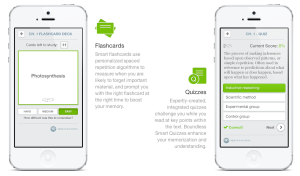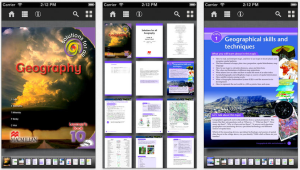While technology has, and will continue to, change trade, scholarly and other segments of publishing in exciting ways, its impact on educational publishing will change the way students learn and, consequently, the way our society will operate in the future. This blog chose to focus specifically on the K-12 educational publishing segment’s shift from print to digital because of the incredible influence this shift has on its audience and the publishing market as a whole.
The educational publishing segment has made exciting and innovative advancements with technology, advancements that the rest of the publishing world must adopt to fit the needs of their future readers. Publishers in this segment are creating interactive digital ebooks, apps and programs that engage and assess students, and they’re using technology and data in sophisticated ways to track individual learning styles and adapt to personal needs.
Over the past three months, Digital Education Watch has tracked significant events in the industry by looking specifically at which businesses are making exciting and innovative advancements with technology. We looked at five large educational publishers that have dominated the segment for awhile: Pearson, McGraw-Hill Education, Houghton Mifflin Harcourt, Scholastic and Macmillan Education. These publishers still dominate the marketplace, and most of the innovative ebooks, apps and digital programs are coming from these five companies.
However, as technology disrupts this marketplace, new services and products emerge. This blog has tracked four successful startups—Lore, BetterLesson, Clever and GoalBook—that offer teachers innovative online services. These services include social networking for the classroom and for lesson planning; data analysis and management; and online resources for special education teachers. The college textbook company Boundless shows how startups also have the opportunity to compete with the aforementioned big publishers in the textbook market as more schools move away from print materials and look to incorporate technology in new ways.
A common theme among the developments and conversations being made in the industry are the Common Core State Standards, one of the biggest influences in how our current educators are approaching their instruction. Last month at the Frankfurt Book Fair, John Wheeler, senior vice president of strategy, emerging technologies, and content solutions of SPi Global, a company that offers digital publishing solutions, discussed how the Common Core has reshaped the classroom and publishing segment around it. Wheeler explains, “We’re seeing a fairly wholesale move across the educational world from books and chapters to more of a learning outcome scenario. That’s one of the drivers of Common Core. They’re taking a good look at what needs to be taught, how can we guarantee that it’s being taught, and how can we assess that it’s been taught. It’s really caused our publishing partners to take a good, hard look from inception through delivery at how we’re producing content.”
While each of the big educational publishers are taking this good, hard look in different ways, there are several common themes and trends emerging among the digital products they are creating. While many schools are hesitant or can’t afford to completely abandon their print materials, the big educational publishers are quickly revolutionizing their products. While McGraw-Hill Education aims to offer teachers a middle ground between print and digital, they are evolving their content into ebooks, apps and online learning programs at almost the same speed as Pearson and Houghton Mifflin Harcourt, companies who are digitizing their products with full force. As these publishers are using new digital containers, the content is being produced in smaller, more interactive chunks. Because of this new “bite-sized” content, apps are emerging as a favorable format; even the ebooks Pearson, McGraw-Hill and Houghton Mifflin Harcourt are producing resemble apps more than they do print textbooks.
Another notable trend identified is a focus on personalized learning, one of the benefits discussed in this blog’s post about the added value of digital in the classroom. Startups like GoalBook were created to enhance IEPs with technology, while larger companies like Pearson, McGraw-Hill Education and Houghton Mifflin Harcourt aim to bring that personalized learning experience to all students by developing digital products that analyze and adapt to students’ learning styles. In order to achieve this, another trend has emerged among companies: a focus on data. All three big educational publishers are investing in data analytics: Pearson purchased Learning Catalytics™ in April 2013, McGraw-Hill Education bought Key Curriculum in 2012 and Houghton Mifflin Harcourt recently acquired Choice Solutions Inc. Startups like Clever are also infiltrating the market by offering data analytics services and integrated products to schools and programmers.
After looking at how the dominating publishers are approaching digital products and exploring the services that the successful education startups are offering, my assessment of the educational publishing segment is that technology is acting as a disruptive innovation in the shift from print to digital and the industry is changing drastically as a result. Technology is disrupting companies’ business models and products and, because of this disruption, there is great potential for startups to compete successfully with the big players.
As technology and the Common Core standards alter curricula and lesson planning, teachers and schools will have more options to choose from when selecting their materials. As print textbooks are replaced with tablets and apps, less schools will automatically turn to Pearson and McGraw-Hill for their products and will begin to look elsewhere. I predict that more innovative, technological thinkers will create startups to infiltrate–and revolutionize–the educational publishing segment, and that the marketplace for educational materials will change dramatically.







